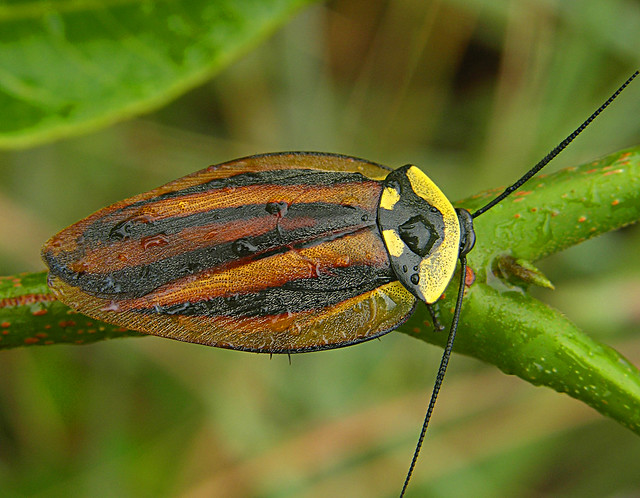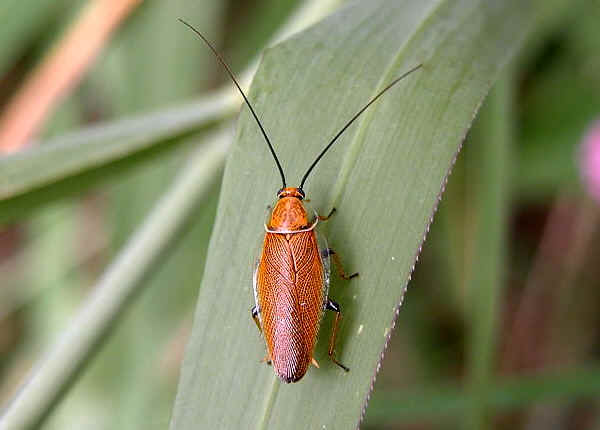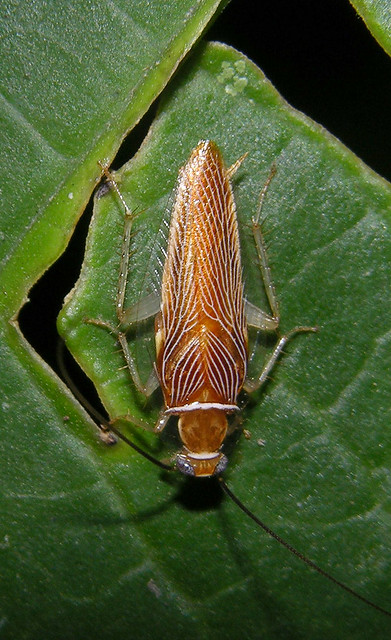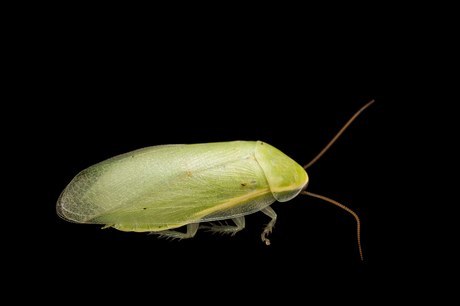I was scanning the titles of new journal articles a while back, and came across one that made me think, hey, that may be about rats, but it is
totally relevant to dogs. And then I thought, why don’t I teach a class on it? Read and interpret this really interesting journal article with a group of dog trainers and dog lovers?
I will be teaching the class
Prenatal Stress and Anti-Depressants for APDT the week of November 18 (and you are invited to take it). This post will be used as reading material for it. In the class, we will talk about this article and what conclusions we can draw from it and apply to dogs. So I may not draw as many the conclusions for you in this post as I usually do; the plan is for the students to do that together in class. But it was a fascinating paper and there’s lots of good material in it, so read on if you want a conclusion-free summary of it!
Pereira-Figueiredo I., Juan Carro, Orlando Castellano & Dolores E. Lopez (2014). The effects of sertraline administration from adolescence to adulthood on physiological and emotional development in prenatally stressed rats of both sexes, Frontiers in Behavioral Neuroscience, 8 DOI: http://dx.doi.org/10.3389/fnbeh.2014.00260Why prenatal stress? So what’s prenatal stress and why is it important to dogs? The authors of the article don’t provide much background on this phenomenon, but it’s an interesting one: when a mammal undergoes unusually high stress during her pregnancy, the personality of her offspring can be affected. We believe that the stress hormones rising in her bloodstream can pass through her placenta to the fetus or fetuses, and can change how their brains develop at this very early stage of life. That’s prenatal stress: stress experienced before birth.
Part of what this paper investigates is exactly how prenatal stress affects the developing personality, because we don’t yet fully understand how this stuff works. In general, though, we expect prenatally stressed animals to be more anxious and less confident than animals who were not prenatally stressed.
Does prenatal stress affect dogs? We don’t know for sure, but we think it is something that can affect most or all mammals. Would it happen commonly? Hard to say, but I imagine a pregnant dog who is stray or in a shelter and highly stressed, and I wonder what effects this might have on her puppies.
What can you do about it? If you have a puppy that you believe was prenatally stressed and whose personality you thought was adversely affected, what are your options? Careful socialization and good enrichment are always an excellent choice, but in some cases you might consider medication. This study looks at whether a particular anti-depressant, sertraline, might help change the individual’s personality long-term if given in adolescence. Sertraline is an SSRI, in the same class of medications as Prozac. These are widely used medications believed to be fairly safe, but one of the questions these researchers ask is whether it is safe when given throughout an animal’s entire adolescence.
SSRIs such as sertraline affect the levels of serotonin in your brain. Serotonin is a chemical which affects mood; depressed people tend to have less of it, as do aggressive people. As a result, it is the target of a fair number of anti-depressants, which work to increase its levels. Prenatal stress is known to disrupt the serotonin system in the brain, so a medication which affects serotonin is a reasonable choice for prenatally stressed individuals.
So the idea is: give these prenatally stressed animals a medication which increases their serotonin levels while they are adolescents and their brains are still developing. The hope is that they will develop into more normal adults than they would have without the medication. So, exactly how do you investigate such a question?
Methods: how the study workedFirst, the researchers stressed some pregnant rats by putting them in clear tubes to restrain them, and shining bright light on them. This was repeated for forty-five minutes at a time, three times a day.
They also kept control rats, who were not stressed during their pregnancy. The pups born to these two sets of rats were then in two categories: prenatally stressed pups and non-stressed pups.
The rat pups began their anti-depressant treatment with sertraline when they were one month old. Now there were four groups of rat pups:
prenatal stress
anti-depressants | prenatal stress
no anti-depressants |
no prenatal stress
anti-depressants | no prenatal stress
no anti-depressants |
Having these four groups allowed the researchers to pick apart the two different effects, the effect of prenatal stress and the effect of anti-depressants during adolescence.
The pups were tested at two months of age, the beginning of rat adolescence, to see if the prenatal stress had affected their personalities. They were assessed for how they dealt with startling noises and being exposed to open space (scary for a rat!). Their blood was also tested to see how their immune systems were developing, because immune systems develop differently in animals who have been subjected to high stress. All these tests were run again one month later, at the end of rat adolescence, to see how the anti-depressant given throughout adolescence had affected treated rats compared to the control groups.
Results: what they found- Although we may think of prenatal stress as mostly affecting an animal’s behavior, it’s been shown to also affect metabolism, so this study looked at birth weight. Interestingly, prenatal stress only reduced the birth weight of the female rat pups, not the males. The weights of these females had equalized compared to non-stressed pups by weaning age. After weaning, though, the prenatally stressed females continued to gain weight and ended up heavier as adults than the non-stressed females. When prenatally stressed females were given the anti-depressant sertraline, however, this weight difference was reduced.
- The pups were also tested for their startle response when they heard a sudden sound. Prenatally stressed rat pups did seem to have a larger startle amplitude (size) compared to controls, but this wasn’t statistically significant, and was not reversed by sertraline treatment.
- Prenatally stressed females did not habituate to the startling sound after several exposures as well as rats from other groups did; treatment with sertraline reversed this effect.
- The pups’ behavior in an open space was tested. No difference was seen between prenatally stressed and non-stressed pups, except in males on their first time being tested (not on later tests).
- In the open space test, only non-stressed females explored more (became more confident) on repeated testing; males and prenatally stressed females did not become more confident with repeated exposure to the open space.
- The pre-natally stressed rats showed a significant decrease in their number of white blood cells. This change was reversed when they were treated with sertraline.
Discussion: what does it all mean?The study’s main conclusions are that effects of prenatal stress can be seen in rats, and that giving sertraline during adolescence did not harm them.
The rapid weight gain in the pre-natally stressed females is an effect that’s been seen before, and seen in humans. Children born with low birth weights often grow to have issues with their weight and can suffer from diseases related to a poorly regulated metabolism. This loss of control of energy balance has been associated with dysregulation of serotonin in humans, adding additional support to the choice of sertraline, an anti-depressant which interacts with the serotonin system.
It is interesting that no anxiety-like behavioral changes were seen in the prenatally stressed rats. Prenatal stress is known to cause anxious personalities in many cases. However, these rats were as confident (or as anxious!) in the open space test as rats who had not been prenatally stressed. The researchers comment that this particular test has been done on prenatally stressed rats in other studies, and that those rats didn’t show anxiety in the open space test either, so this does seem to be a real result, rather than a statistical error.
They did see some differences, though. Male rats who had been prenatally stressed did show some additional reluctance to explore (i.e. anxiety) on their
first day only in the open space test. After that they explored equal amounts compared to other groups.
The researchers also note that while most of the rats that they tested were equally anxious on all days that they were tested in the open space, females who had not been prenatally stressed appeared to begin to explore more on repeated tests, as if they were learning to be less anxious as their surroundings became more familiar. This was not the case in male rats or in rats who had been pre-natally stressed.
Remember also that female rats who were prenatally stressed did not habituate to startling sounds as well as rats from other groups. Is it possible that with this particular model of prenatal stress, the personality effects of prenatal stress appear not as classical anxiety, but as difficulty habituating to new situations or stressors such as loud noises?
Finally, the researchers looked at effects of pre-natal stress on the immune system, and found significant effects (decreased numbers of white blood cells) which were reversed by treatment with the anti-depressant sertraline. Why did they care about the immune system? Because the immune system and the stress system are closely intertwined. Stressed animals show changes in the numbers of their white blood cells just as the prenatally stressed rats did. The researchers were using the changes in the immune system as markers for changes in the stress system.
There are two possibilities for why these prenatally rats showed stress-associated changes in their immune systems: either because they themselves had high stress levels, or because their immune systems were developing prenatally (in utero) in a high stress environment due to their mother’s stress levels. Either way, it is interesting that treatment with sertraline reversed these effects, suggesting that it may have either changed current stress levels in these adolescent rats (even though the only serious stressors they had undergone were before their birth!), or had counteracted other effects from that prenatal stressor.
ConclusionsIt can be hard to know exactly what conclusions to draw from a scientific paper. What do you think? What are the most important findings in this paper (maybe just two or three of them)? Do you think those findings are real phenomena, or maybe just statistical mistakes? If they’re real, do you think they can be extrapolated from rats to humans or dogs?













































































